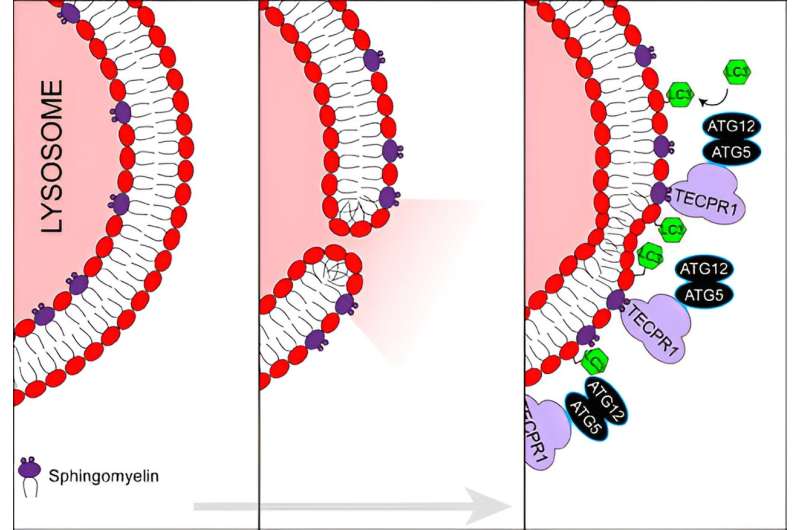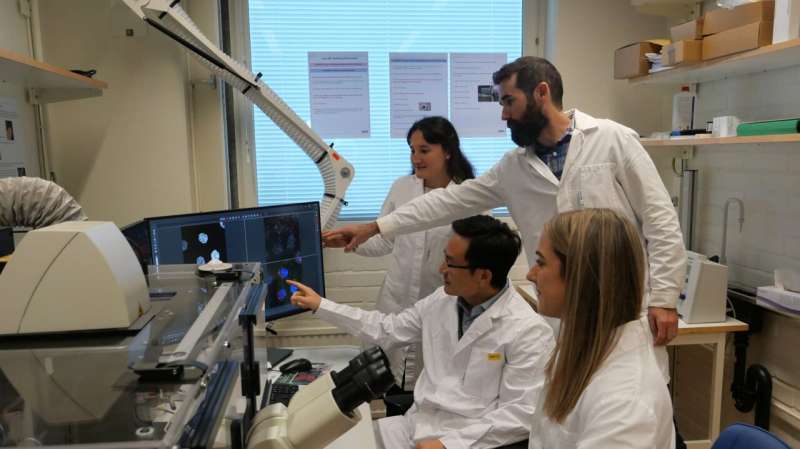This article has been reviewed according to Science X's editorial process and policies. Editors have highlighted the following attributes while ensuring the content's credibility:
fact-checked
peer-reviewed publication
trusted source
proofread
New role for autophagy protein in membrane repair discovered

Maintaining the structure of intracellular membranes is essential for preserving normal cellular function. New research by a team of biochemists at Umeå University identifies a strategy employed by cells to detect and repair membranes that have been damaged by chemical or bacterial stress.
The study is published in EMBO Reports and highlighted in the News & Views in EMBO Journal.
"It is definitely surprising. We began this project to learn more about how cells remove damaged membranes, and ended up discovering an entirely new pathway for membrane repair," says Dale Corkery, Research Engineer at the Department of Chemistry at Umeå University, lead author of the study.
When cellular membranes become damaged, the cell must rapidly decide whether it is going to repair or remove the damaged membrane. Removal of damaged membranes is regulated by the cellular recycling process called autophagy—a process that professor Yaowen Wu and his team at Umeå University have been studying.
Autophagy is used by cells to clean up their own waste products. Failure to properly dispose of waste can lead to diseases such as Alzheimer's, cancer and infections.
The current study is the first to show that the function of the autophagy machinery may not be limited to membrane removal but may also extend to membrane repair.

"Taking a chemical biology approach, we were able to identify a protein called TECPR1 as the key regulator of this new repair pathway," explains Dale Corkery.
TECPR1 detects damaged membranes via changes in the membrane lipid composition and binds at the site of damage. There, the protein recruits components of the autophagy machinery to the site of membrane damage and functions to decorate the damaged membrane with the ubiquitin-like protein, ATG8—a process traditionally linked to membrane removal.
However, instead of promoting removal of the damaged membrane, the researchers found that these ATG8-decorated membranes were being repaired and restored to their original functional state.
"The next step is to characterize exactly how the autophagy machinery is contributing to the repair process and to see what implications this new pathway might hold for pathological states that are linked to membrane damage—like neurodegeneration and cancer," says Dale Corkery.
More information: Dale P Corkery et al, An ATG12‐ATG5‐TECPR1 E3‐like complex regulates unconventional LC3 lipidation at damaged lysosomes, EMBO reports (2023). DOI: 10.15252/embr.202356841
Journal information: EMBO Journal , EMBO Reports
Provided by Umea University




















